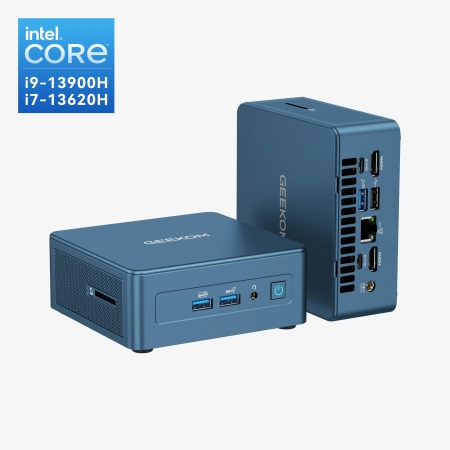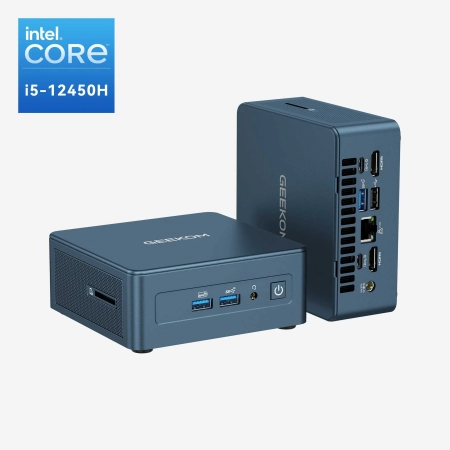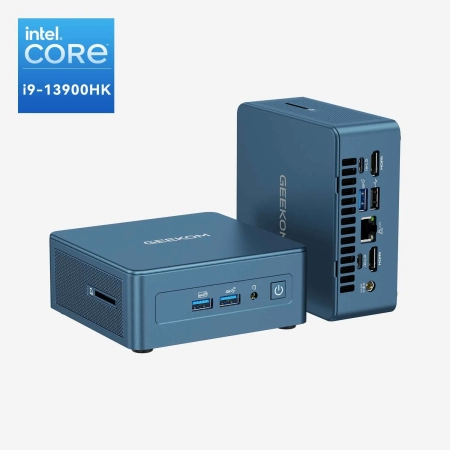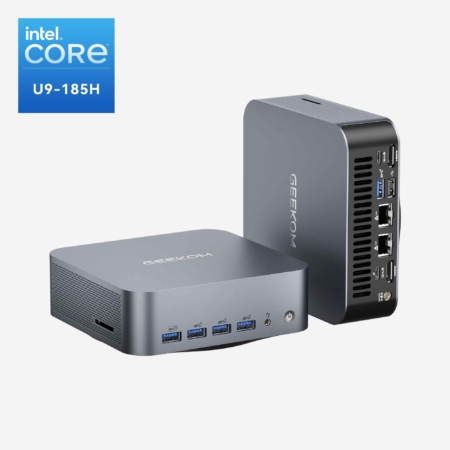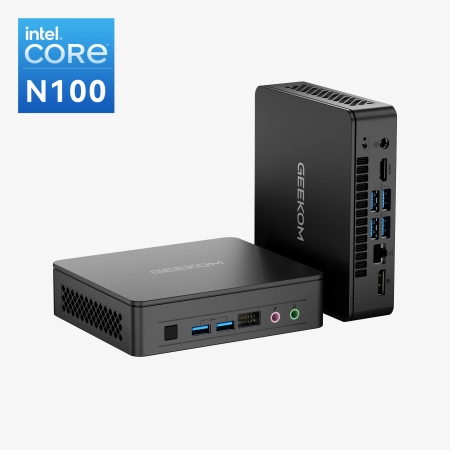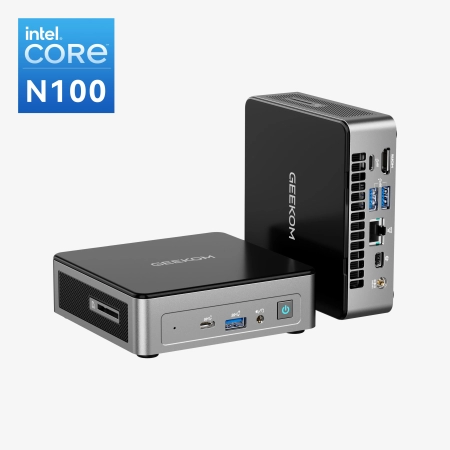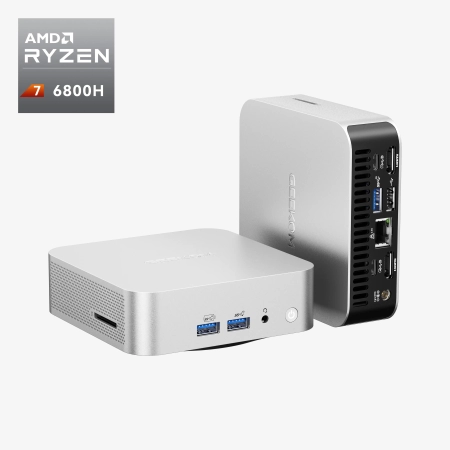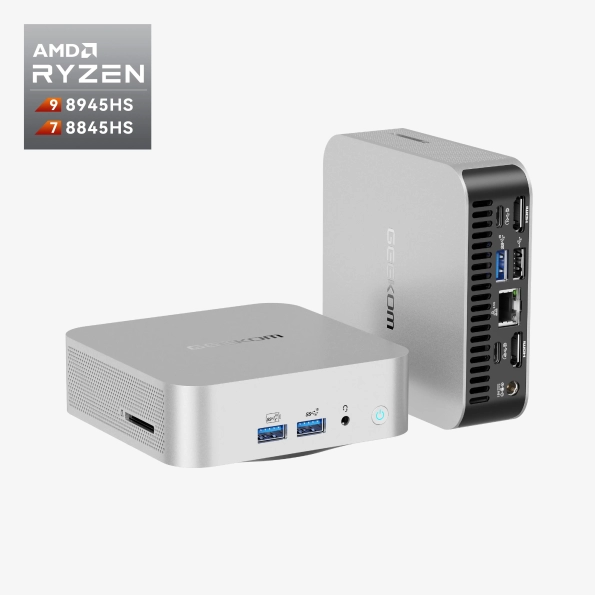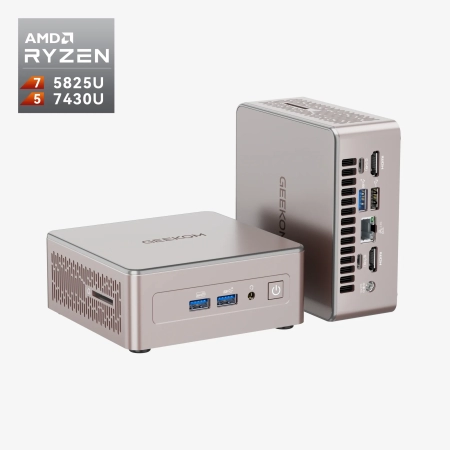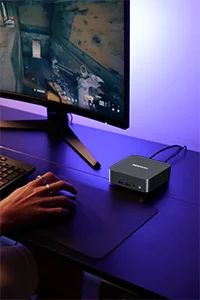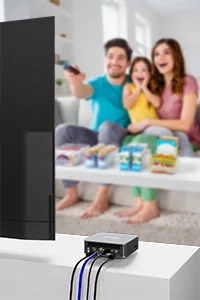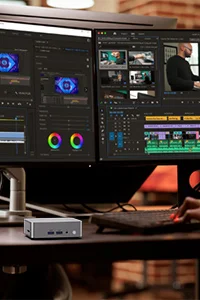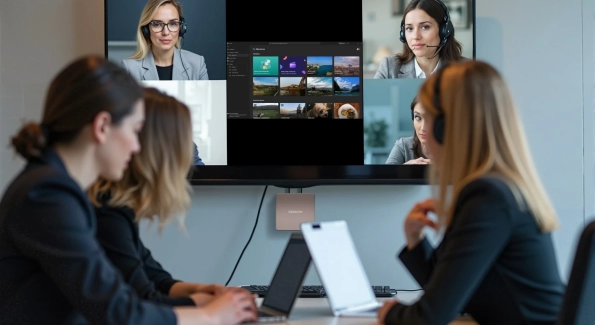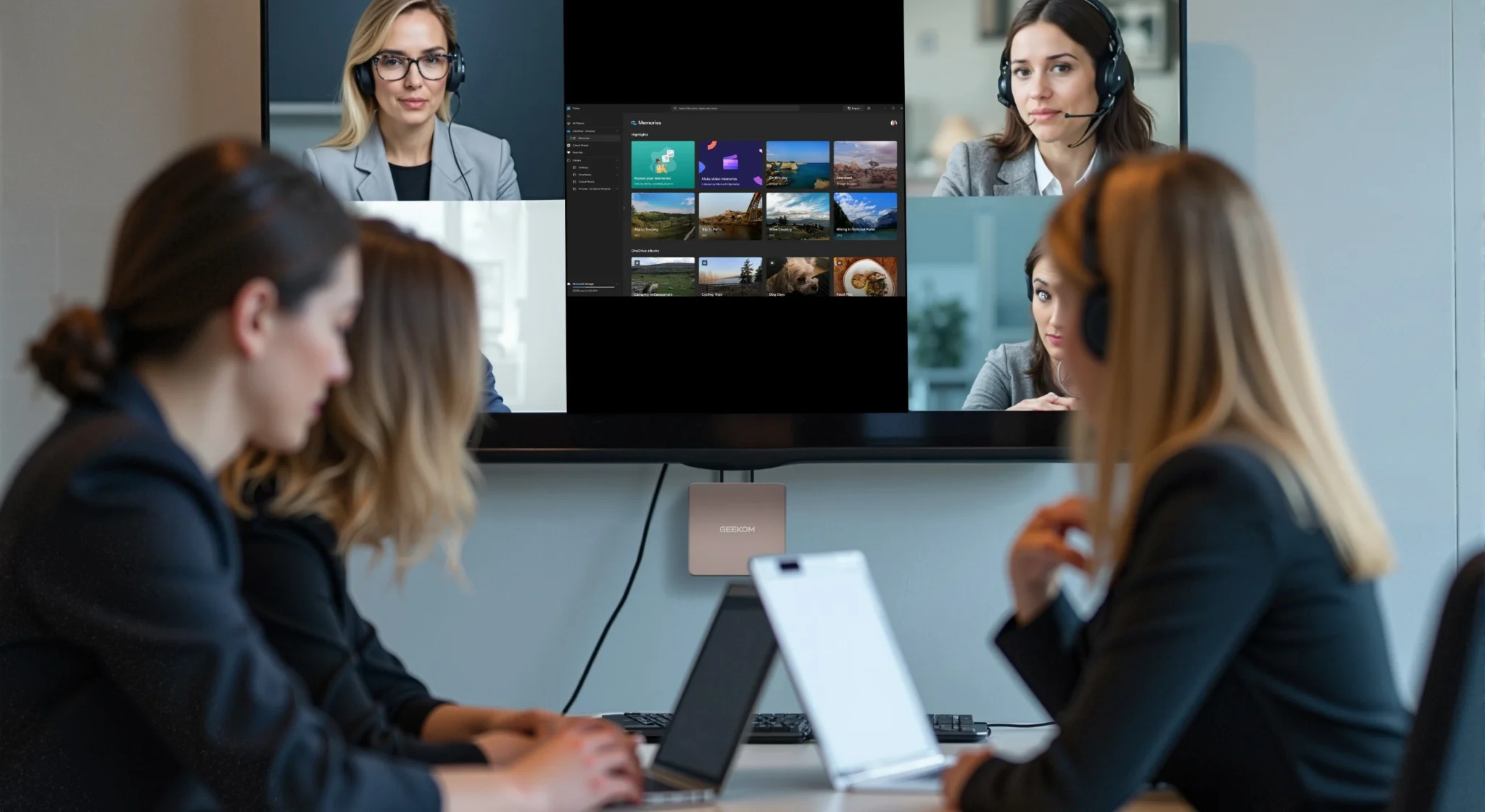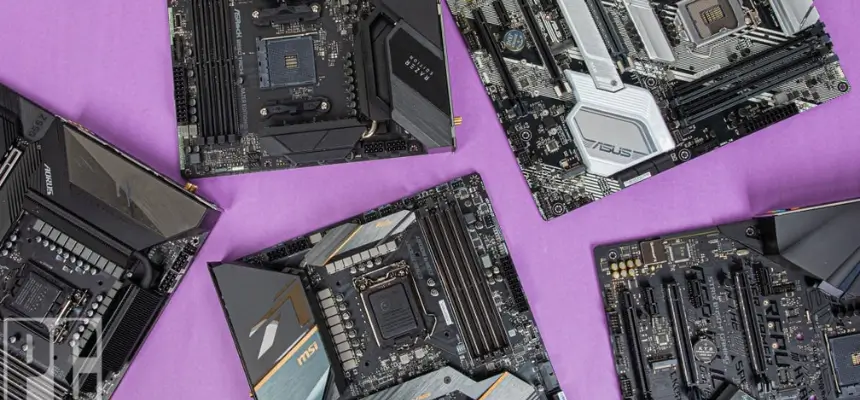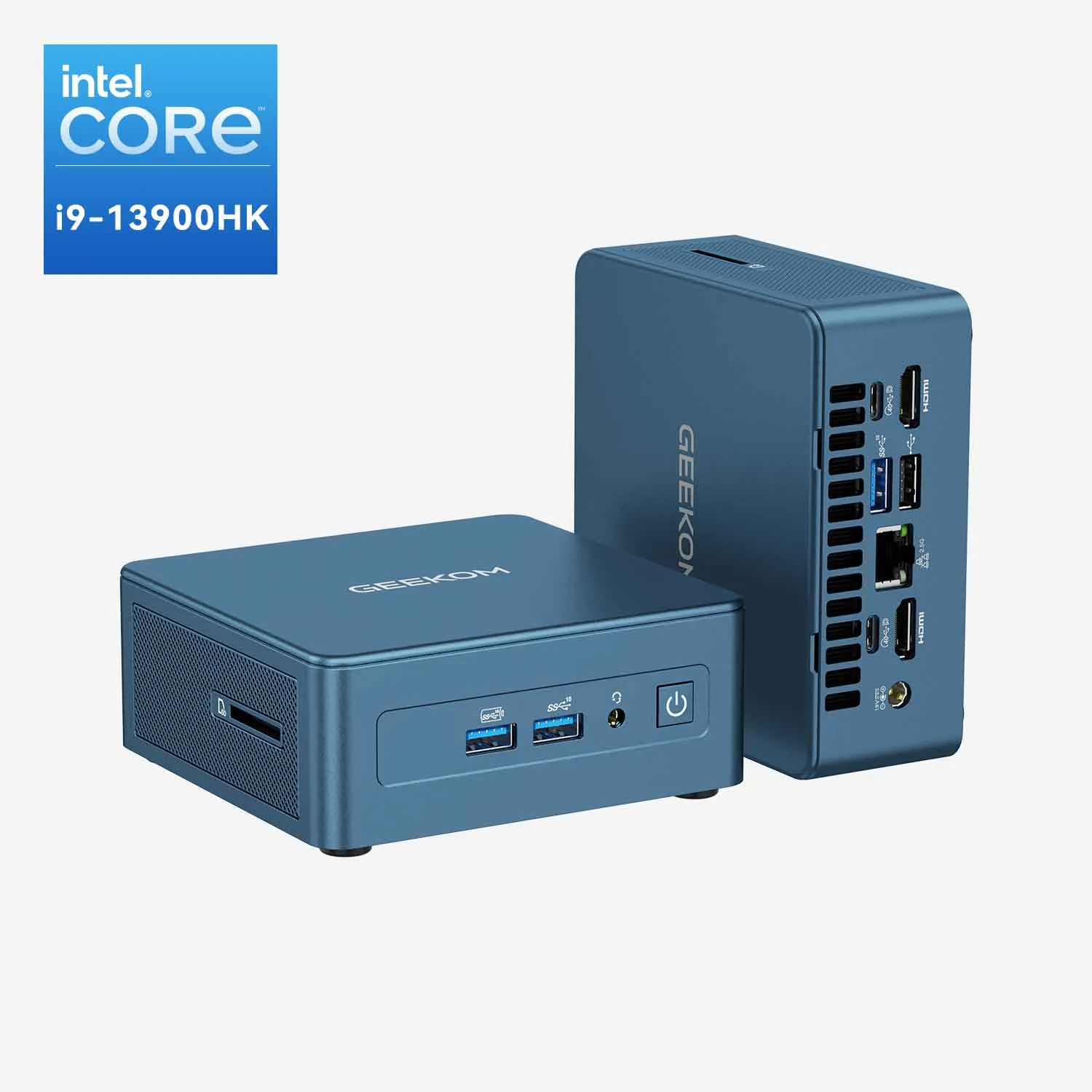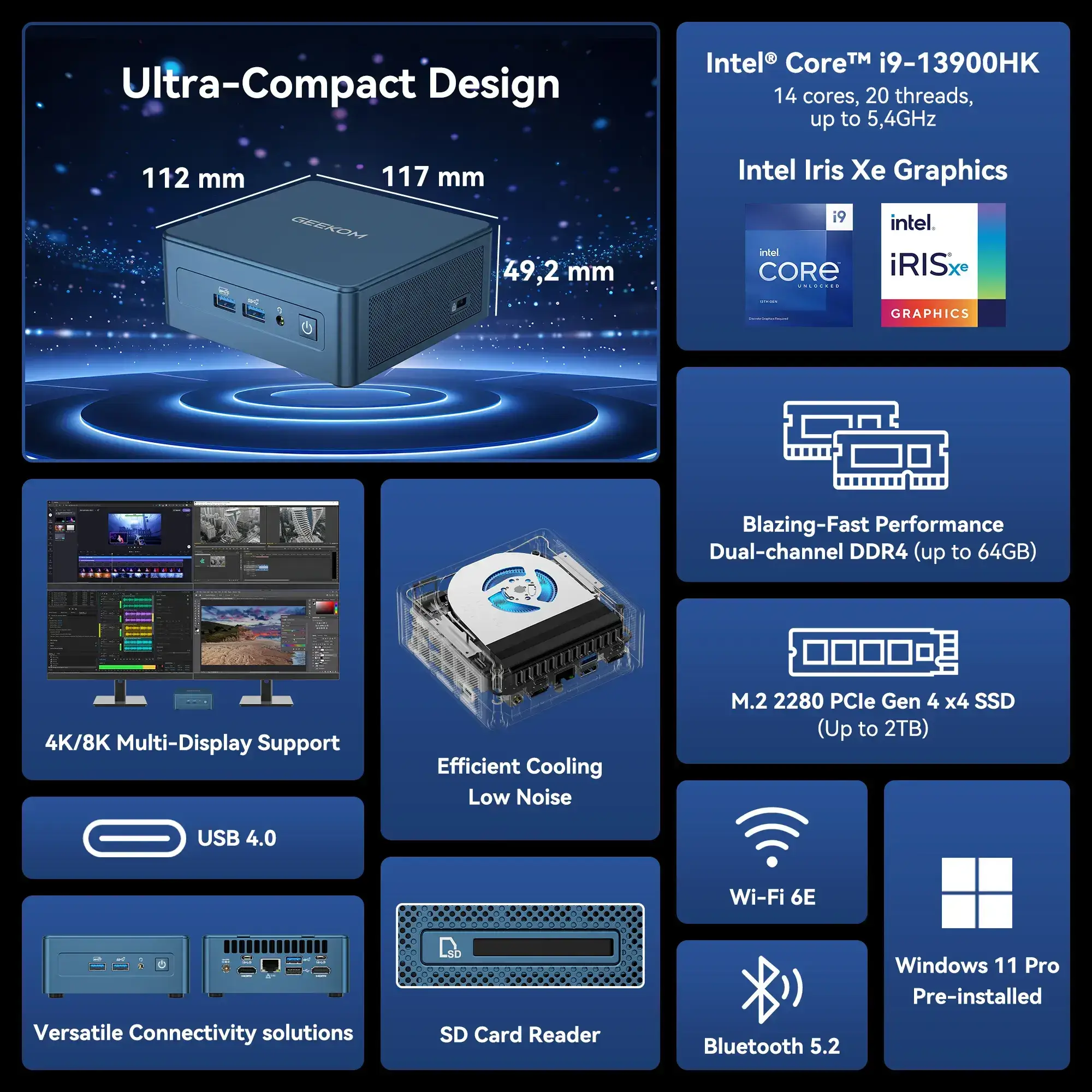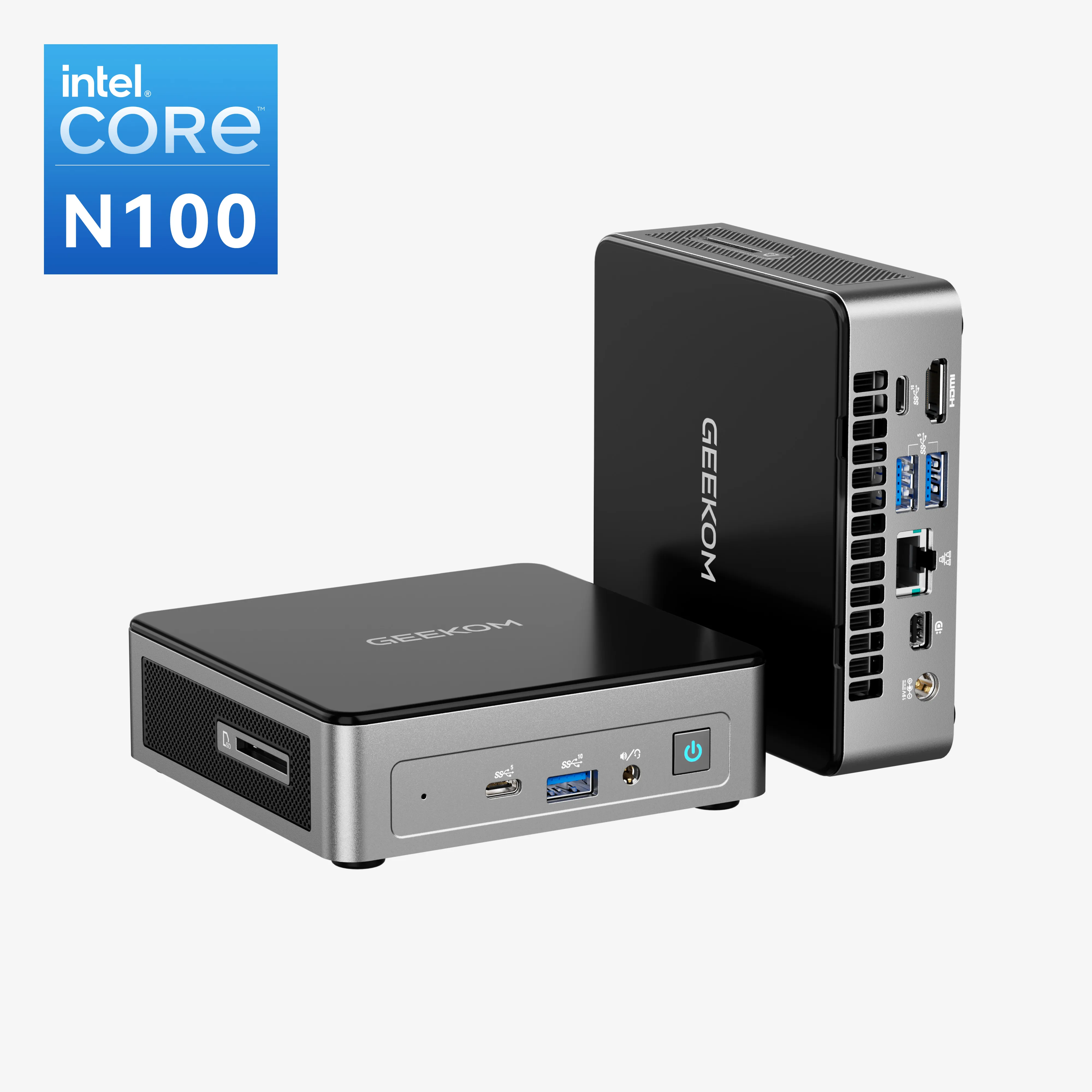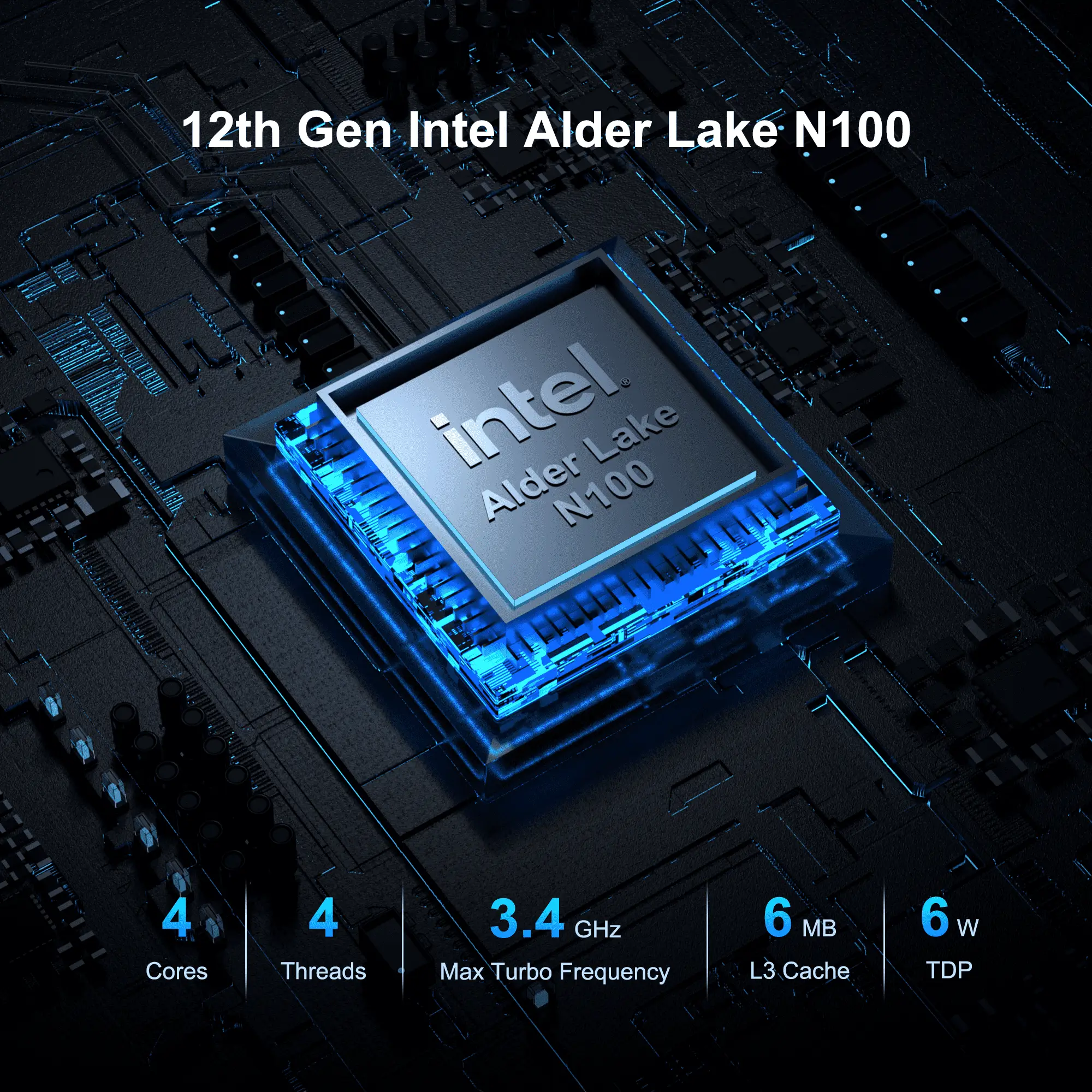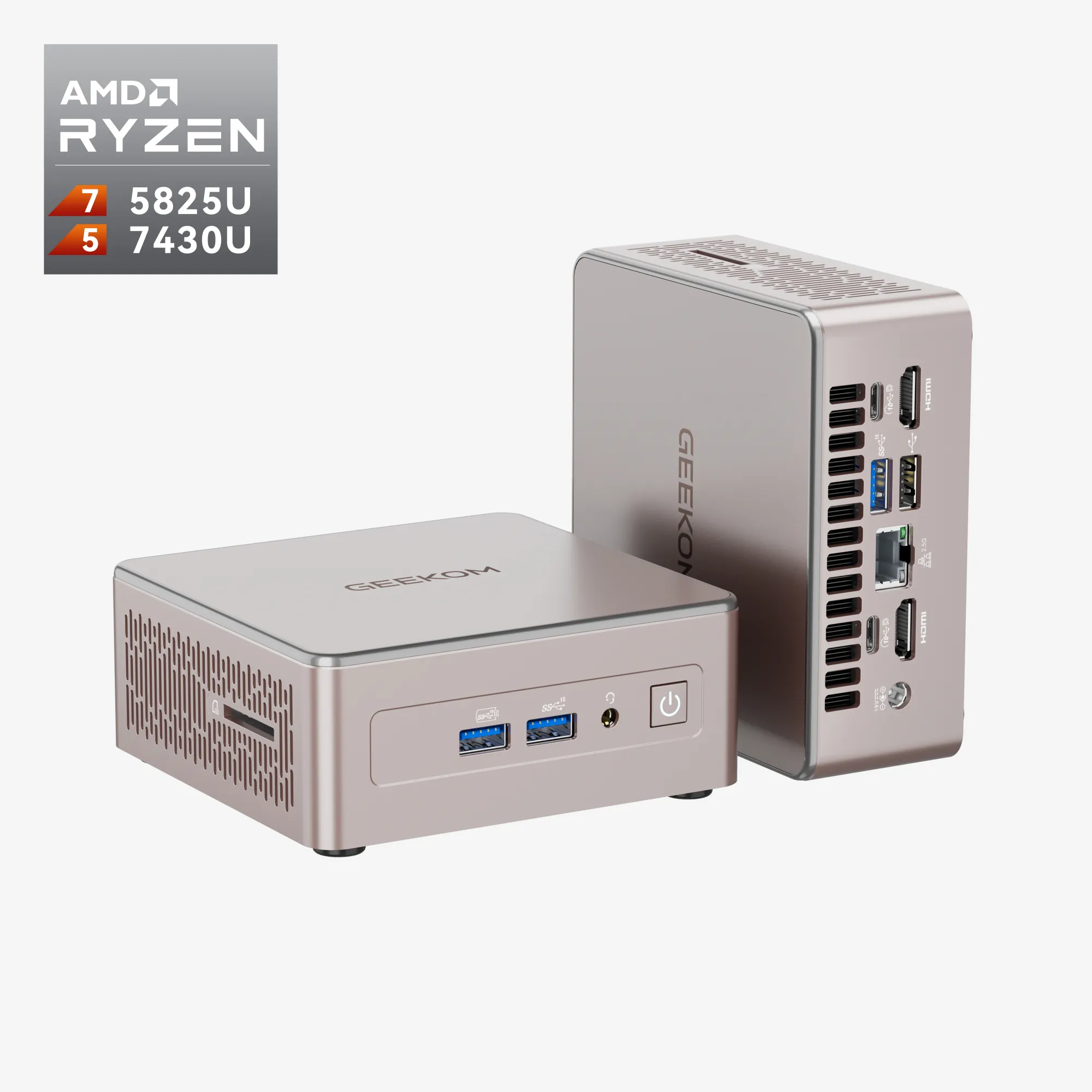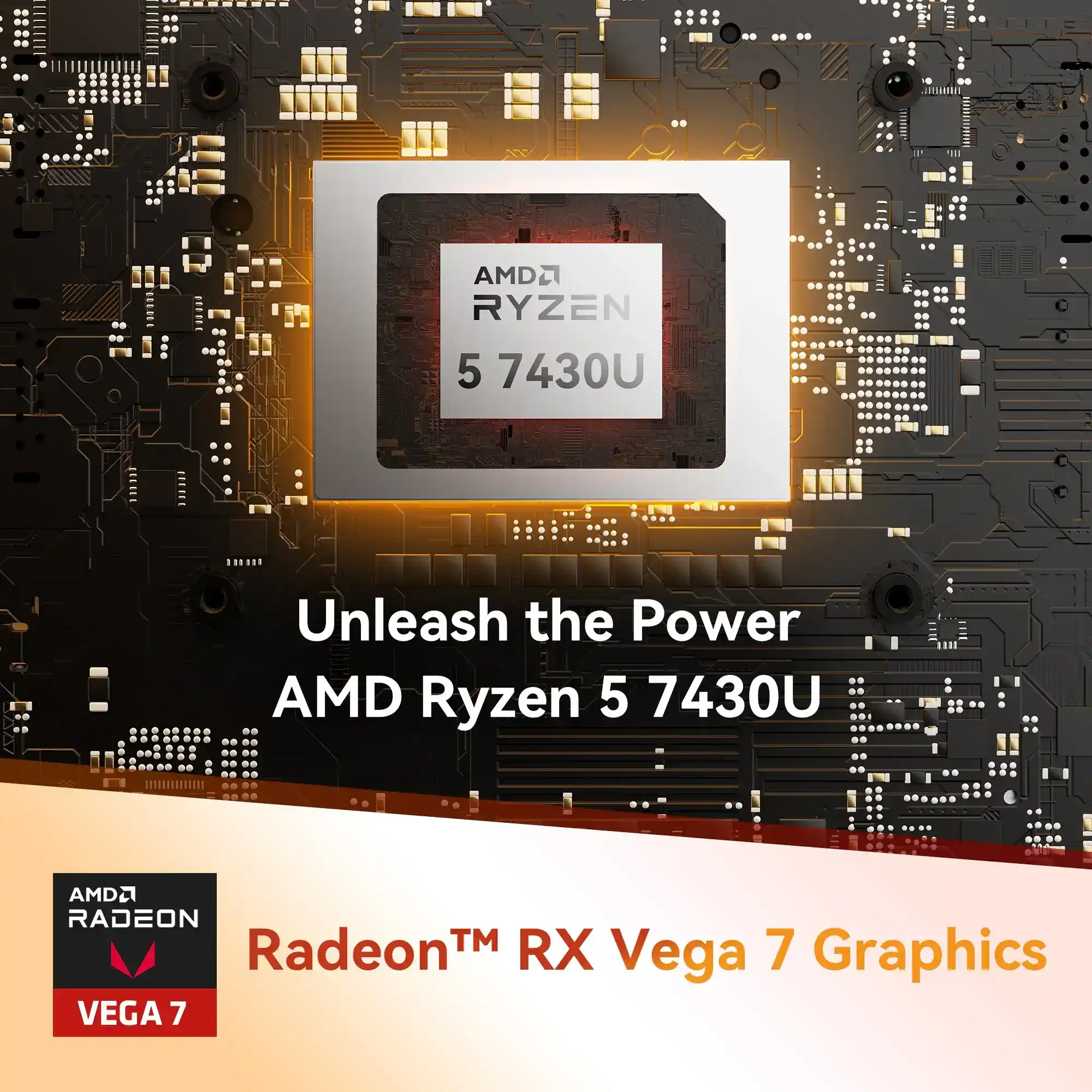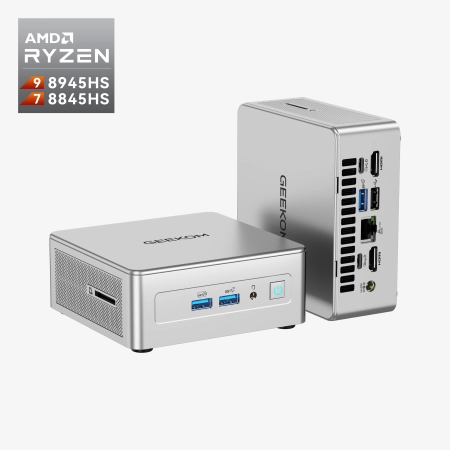Introduction
Video calling and conferencing have become an essential tool for communication in both personal and professional settings. With the rise of remote work and virtual meetings, the demand for reliable and high-quality video conferencing solutions has increased significantly. In today’s digital age, video conferencing allows individuals and teams to connect seamlessly, regardless of their physical location. This technology has revolutionised the way we communicate, making it easier to collaborate, share ideas, and stay connected with colleagues, clients, and loved ones.
What is Video Conferencing?
Video conferencing refers to the use of technology to facilitate face-to-face communication between individuals or groups in different locations. This can be achieved through various platforms and devices, including mini PCs, laptops, and smartphones. Video conferencing software, such as Zoom, Microsoft Teams, and Google Meet, enables users to connect with others remotely, making it an ideal solution for remote work, virtual meetings, and online collaborations. By using a mini PC, you can ensure a stable and efficient video conferencing experience, thanks to its powerful processors and robust connectivity options.
Why Choose a Mini PC for Video Conferencing?
Mini PCs are becoming increasingly popular for video conferencing due to their compact design. Here are some of the key benefits of using mini PCs for video conferencing:
Space-Saving Design:
Mini PCs are designed to be compact, making them an excellent choice for video conferencing on the go or in small spaces where desk space is at a premium. This is particularly useful if you have limited space in your home office or workspace.
Performance:
Mini computers may be small, but they pack a lot of performance. These machines are equipped with powerful processors and ample RAM, delivering exceptional performance to handle intensive tasks such as video conferencing software and multitasking with demanding applications. Moreover, these systems use solid-state drives (SSDs) that offer quick boot-up times and rapid application launching.
Portability&Mobility:
Mini PCs are designed to be small and portable. This feature makes them a great option for individuals who need to attend video conferences while on the go. Whether you’re travelling for work or just need to participate in a meeting from a different location, a mini PC can easily fit into your bag or backpack. Because of its small size, it is easier to move than a desktop computer. When it is necessary to change the meeting place, it will not be too troublesome to affect the meeting process.

Cost-effective:
A mini PC is an affordable option for those who want a dedicated device for video conferencing. Instead of investing in an expensive laptop or desktop computer with features you don’t need, a mini PC can provide the necessary components at a lower cost.
Easy to Set Up:
Setting up a mini PC for video conferencing is easy, allowing users to quickly configure their devices. With just a few simple steps, you can connect your mini PC to a camera and microphone, launch your video conferencing software, and start your meeting.
Compatibility:
Another benefit of mini PCs is their compatibility with a wide range of video conferencing software. Whether you prefer Zoom, Microsoft Teams, Google Meet, or any other video conferencing tool, chances are there’s a mini PC out there that can support it. GEEKOM mini PCs pre-installed with the Windows 11 operating system, enhancing their compatibility with various video conferencing software.
What to Look for in a Mini PC for Video Conferencing
When choosing a mini PC for video conferencing, there are several key factors to consider. Understanding the key features of mini PCs can help in making an informed decision.
Processing Power
The processor is the brain of your computer, and having a fast and powerful processor is essential for video conferencing. Look for a mini PC with an Intel Core i5 or i7 processor or an AMD Ryzen 5 or 7 processor. This will ensure that you have enough processing power to handle video calls without any lag or stuttering.
RAM and Storage Capacity
Random Access Memory (RAM) determines how many programs and applications your mini PC can run at once. For video conferencing and other basic computing tasks, you want a mini PC with at least 8GB of RAM to ensure seamless performance. In terms of storage capacity, you’ll want enough space to store video recordings and any necessary software. At least 256GB of storage is recommended.
Graphics capabilities
Having a mini PC with dedicated graphics capabilities is not always necessary for video conferencing, but it can enhance your overall graphics performance and experience. Look for a mini PC with an NVIDIA or AMD graphics card if you plan on using your computer for more than just video conferencing. Dedicated graphics can also improve video playback quality, enabling smoother 4K video playback and better handling of multimedia functions.
Connectivity Options
Having a variety of connectivity options, including multiple USB ports, is essential for video conferencing. Look for a mini PC with built-in WiFi and Bluetooth, as well as plenty of USB ports for connecting peripherals like webcams, microphones, and speakers. Additionally, USB-C connectivity can enhance productivity by supporting dual monitor capabilities.
Video Conferencing Software
Video conferencing software is a crucial component of any video conferencing setup. With so many options available, it can be challenging to choose the right one for your needs. The right software can enhance your video conferencing experience by providing high-definition video, screen sharing, and real-time messaging capabilities.
Overview of Popular Software
Some of the most popular video conferencing software includes Zoom, Microsoft Teams, and Google Meet. These platforms offer a range of features, including high-definition video, screen sharing, and real-time messaging. When selecting a video conferencing software, consider factors such as ease of use, compatibility with your device, and the number of participants you need to support. Many mini PCs, such as those from Intel NUC, come with pre-installed video conferencing software, making it easy to get started with video conferencing. These platforms are designed to work seamlessly with mini PCs, ensuring a smooth and efficient video conferencing experience.
Additional Features to Consider
When choosing a mini PC for video conferencing, there are several additional features to consider, including noise reduction, energy efficiency, and connectivity options. These features can significantly enhance your video conferencing experience and ensure that your device meets your specific needs. Reliable performance is crucial for a smooth video conferencing experience.
Noise Reduction and Energy Efficiency
Noise reduction is an essential feature to consider when choosing a mini PC for video conferencing. Look for devices with built-in noise reduction technology, such as fanless designs or advanced soundproofing materials. This will help ensure that your video calls are clear and free from background noise. Energy efficiency is also crucial, as it can help reduce your carbon footprint and save you money on your energy bills. Many mini PCs, such as those from GEEKOM, are designed with energy efficiency in mind, consuming significantly less power than traditional desktop computers. With features like USB ports, Wi-Fi, and Bluetooth connectivity, you can easily connect your peripherals and stay connected with your team. Additionally, consider the form factor of your mini PC, as some devices, like the Intel NUC, offer a small form factor that can be easily mounted behind a monitor or in a conference room, making them ideal for Zoom rooms and meeting rooms. Robust security features are also essential for protecting data during video conferences.
Peripherals and Accessories
Mini PCs often require additional peripherals and accessories like monitors, webcams, microphones, and speakers. to enhance their functionality and user experience. When selecting peripherals for a mini PC, consider the specific needs of your video conferencing setup.
Monitors and Webcams
For video conferencing, a high-quality monitor and webcam are essential. Look for a monitor with good resolution and a webcam with high-definition video capabilities. Many mini PCs support multiple monitor setups, allowing you to connect two or more monitors for an extended workspace. When choosing a webcam, consider the resolution, field of view, and low-light sensitivity. Additionally, consider investing in a high-quality microphone to ensure clear and crisp audio.
Troubleshooting Common Issues
Despite their reliability, mini PCs can sometimes encounter issues that affect their performance. Common problems include connectivity issues, slow performance, and compatibility problems with video conferencing software.
Common Issues with Mini PCs
To troubleshoot common issues with mini PCs, start by checking the connectivity ports, such as USB ports and Wi-Fi. Ensure that all cables are securely connected and that the Wi-Fi network is stable. If you’re experiencing slow performance, consider upgrading the RAM or storage capacity. For compatibility issues with video conferencing software, check the system requirements and ensure that your mini PC meets the minimum specifications. You can also try updating the operating system, graphics drivers, or video conferencing software to resolve any compatibility issues. Furthermore, consider resetting the mini PC to its default settings or seeking assistance from the manufacturer’s support team.
Future of Mini PCs
The future of mini PCs looks promising, with emerging trends and technologies set to enhance their performance, functionality, and user experience.
Emerging Trends and Technologies
Emerging trends in mini PCs include the adoption of artificial intelligence, improved graphics performance, and enhanced connectivity options. The integration of AI-powered processors can enable mini PCs to perform tasks more efficiently and effectively. Additionally, advancements in graphics performance can support more demanding applications, such as video editing and gaming. Improved connectivity options, such as Wi-Fi 6 and USB 4, can provide faster data transfer rates and more reliable connections. Other emerging trends include the use of mini PCs in IoT applications, such as smart home devices and industrial automation. As technology continues to evolve, we can expect to see even more innovative applications of mini PCs in various industries. Furthermore, the development of new form factors, such as modular mini PCs, can provide users with more flexibility and customization options. Overall, the future of mini PCs is exciting and full of possibilities, and we can expect to see significant advancements in the coming years.
Best Mini PCs for Video Conferencing Recommendations
GEEKOM A5 Mini PC
The A5 mini computer is our top pick for the best mini PC for video conferencing. It features a powerful AMD Ryzen™ 5 7430U processor, which provides excellent performance for multiple video conferencing applications simultaneously.
As a fully configured mini pc, it also has integrated Radeon™ Vega 8 Graphics, making it an excellent choice for video conferencing. Plus, it comes with four USB Type-A ports, two USB Type-C ports and Wi-Fi 6, and Bluetooth 5.2, allowing you to easily connect to other devices. The A5 mini computer also includes 2.5G Ethernet for fast and reliable network connections.
GEEKOM MiniAir 12
GEEKOM MiniAir 12 is a budget-friendly option for video conferencing, making it ideal for students and small businesses. It features a 12th Gen Intel Alder Lake N150 processor, up to 16GB of DDR5 RAM, and supports up to two displays.
It also has an ultra-thin design that allows it to be mounted behind a monitor or under a desk, keeping your meeting room clutter-free. Additionally, the MiniAir 12 is suitable for digital signage applications, making it a versatile choice for business.
Conclusion
Video conferencing has become an essential part of our lives, and having a reliable and efficient Mini PC can make all the difference in ensuring a seamless communication experience.
If you need a powerful device that can handle multiple displays and high-performance tasks, the A5 or Mini Air 12 is a great choice. If you’re looking for a compact and powerful device that won’t break the bank, the MiniAir 12 Mini PC is worth considering.
GEEKOM AU offers a wide range of Mini PCs that cater to different needs and budgets. Check out our website today to find the perfect Mini PC for your video conferencing needs!


